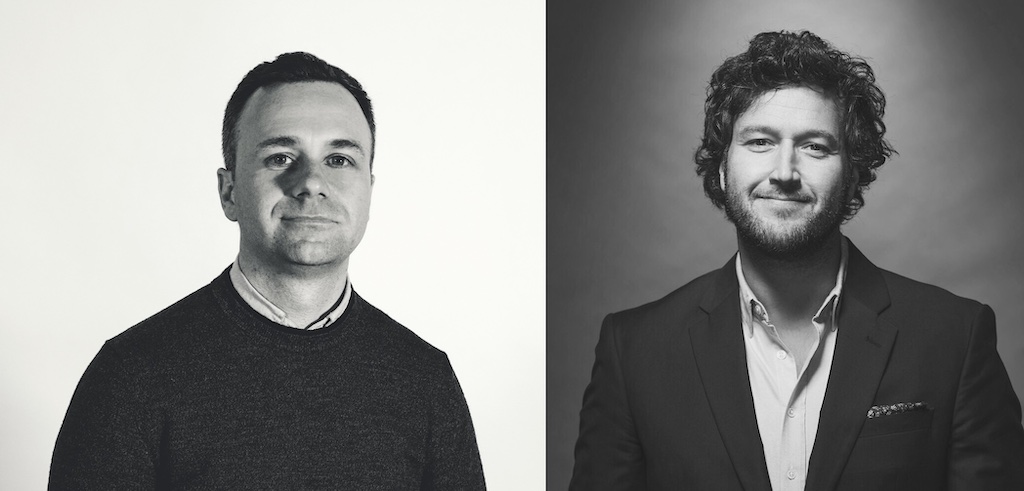By Mark Tungate
Global chief creative officer Aaron Starkman and chief creative officer Mike Dubrick chat about their AI-driven Grand Prix and the agency’s creative process.
“It’s a great idea – but does it really work?” The question floated around the upstairs room at The Groucho Club in London as the jury debated awarding the Digital Grand Prix to “Ketchup AI” by Canadian agency Rethink.
The core of the idea was straightforward: type the prompt “ketchup bottle” into an artificial intelligence engine and it comes right back with an image that resembles, at least a great deal of the time, the iconic Heinz bottle. So we tried it, right there in the jury room. And guess what? I don’t think I’m creating much suspense here – but we got exactly the same result.
Weeks later, I shared this detail during a conversation with Rethink’s global CCO Aaron Starkman and CCO Mike Dubrick. They were grateful for our rigour, but hardly surprised by the outcome. After all, they’d seen the same exercise repeated many times over.

Mike confirms: “We experienced that exact same moment. It started with a hypothesis – and then we had that magical revelation when we typed in the prompt and it yielded Heinz Ketchup-looking bottles.”
The campaign proves that curiosity is one of the many elements that drive creativity. “We’ve always liked the idea of being inventive and experimental, so when AI platforms started to emerge – the DALL-E 2 platform we used was new at the time – we wanted to try them out.
Our philosophy here has always been that Heinz is ketchup. But maybe we’re biased, so what would an AI think? Turns out it agreed with us!”
The result would have worked perfectly well as a print campaign, but it caught fire on social media, with people trying out the prompt for themselves and posting the results.
“The collaboration with consumers was important, so the campaign felt tactile to them and they could have an influence over it. Everyone knows Heinz, but being able to experience it in a new way made it interesting and extraordinary.”

Some brands would have been daunted by the idea of letting consumers run rampant across Instagram with surrealistic images of a major asset, but not Heinz and its agency. “We’re protective of the brand, but not precious about it.
Being playful with some of those assets and allowing consumers to play with them makes the brand more personal, as well as creating a freshness that prevents Heinz from being a static, nostalgic brand and ensuring that it’s still relevant today.”
Rethink and Heinz are a winning team – for example, in 2020 the pair won our Design Grand Prix with the all-red Heinz Ketchup jigsaw puzzle – which presumably reflects a desire on the part of the client to nurture original thinking.
Mike says: “The way to get to great work is for everyone to be on the same page. We’ve gotten to a place where our values and objectives and those of our clients are in lockstep, which allows us to have really honest conversations about the kind of work we want to make.”
He has a tip for agencies who want to encourage clients to take creative risks. “Just suggest something. Start with something small.
The proof is in the pudding, because when you see that creativity going out into the world and the heat it picks up, it becomes contagious.
Seeing the results of creativity makes both sides want to do more of it. After the puzzle came out we were already asking ‘OK, but what’s next?’ We’re always looking forward.”

Rethink’s secret sauce
The Heinz campaign was not the only one that impressed the jury – as the fact that Rethink was Agency of the Year attests.
Clearly the agency is doing something very right. What’s the agency’s creative process? Does it have a watchword, like “humankind” or “disruption”?
Aaron says: “That’s a good question, because I think there’s a perception that ‘disruption’ or chaos is what fuels creativity.
That agencies are all about creatives running around with wacky hair, firing off ideas with no structure and no process. We violently disagree with that notion. We actually think that structure and process is the rocket fuel that creativity needs.”
Rethink’s process, which was established “on day one” and has been evolving over the past 20 years, is called The Rethink Machine.
Creative teams are asked to come up with ideas for a given brief on a fast and loose basis – refined “comps” are discouraged. These ideas are then subjected to a peer review process, either internally or with outside partners, based on the acronym CRAFTS.
In short, the perfect idea is Clear, Relevant, Achievable, Fresh, True and Shareable.
That review results in five to seven remaining ideas that Aaron calls “shallow holes” (“we don’t dig deep at this stage”), which can be taken to the client.
Interestingly, given Epica’s jury, the ideas are often presented “in the form of a press headline”. The client chooses the ideas that merit deeper digging, which leads to the eventual unveiling of one or two fleshed-out propositions.
“By then there are no surprises, because the client has been involved in the process – in that sense they’re co-authors of the idea.”
It’s noteworthy that Rethink is a fiercely independent agency – does this status also have an impact on its creativity?
“It does – big time,” says Aaron. “Not only are we independent, but we’re never gonna sell. Because of those two things, we’re not chasing revenue.
We would never take on a piece of business just for financial reasons. It needs to be a really good opportunity: we need to believe in the brand and its people.”
Teams aren’t busy servicing a cash cow or working up a pitch for one. “We’re working with clients who want what we want, and who buy what we do.”
This also enables the agency to have occasionally tough conversations with clients about the relationship.
“We can have these conversations because we’re not scared of having a bad fiscal quarter like agencies that report to a holding company. As I said, we’re not chasing revenue. We’re chasing the next big idea.”
Given that Rethink beat agencies from all over the world, it occurs to me that there might be a “Canadian style” of advertising that resonates with jurors.
“Canadian agencies have always punched above our weight – and that’s because we’ve never had the same budgets to work with as the US agencies. The idea has to be more powerful: it can’t rely on production quality or star directors.”
He adds that Canada is one of the world’s most multicultural countries, which encourages agencies to distil ideas into impactful messages that will appeal to a wide audience.
As a result, a lot of Canadian campaigns go global. And since awards juries also tend to be diverse, the same ideas hit them hard too.
One of my favourite Rethink wins from last year’s Epica Awards was “The Un-burnable Book” for Penguin Random House.
To speak out against the banning of supposedly “unsuitable” books in US schools, the agency created a fire-proof edition of the book The Handmaid’s Tale and asked its author, Margaret Atwood, to try and set it alight. With a flamethrower. How on earth did they get her to agree?
Mike Dubrick says: “She was wildly enthusiastic. It was a thrill to have her involved: she’s fierce and inspiring. She got the idea instantly and said, ‘Let’s do it!’
The flamethrower and the book were a little like putting Heinz in AI, in that we took something familiar and put it in a new context that captures attention.”
Simple, impactful – and very Rethink.
MARKETING Magazine is not responsible for the content of external sites.
An afternoon of conversations we never had, with leaders most of you never met.
Discover what’s possible from those who made it possible. Plus a preview of The HAM Agency Rankings REPORT 2024.
Limited seats: [email protected]
BOOK SEATS NOW




